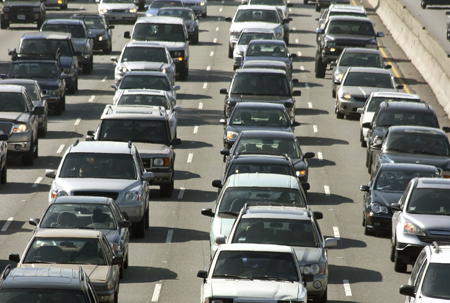
We all know that traffic congestion is getting worse. The major arteries, including Yonge St., Davis Dr. and Highway 7, are packed during peak hours of the day and congestion is only expected to get worse. That is a key reason why York Region is taking steps to improve rapid transit and build livable cities.
We wanted to know what you had to say about congestion, so we recently conducted a survey.* When asking York Region residents how they rate traffic congestion on a 10-point scale, over 75% of them said it was between a six and a 10, where 10 was high traffic congestion. In fact, four times more people rate traffic congestion as “high” than rate it as “low”. And almost 25% of the people surveyed rated congestion as an eight on the scale.
When asked about solutions, the largest percentage of respondents said that more and better rapid transit was the answer. People also cited bicycle lanes and more roads as other solutions.
It sounds like we are on the right track to providing those who work and/or live in York Region the solutions they need to avoid congestion.
What do you think about traffic congestion around York Region and what else should be done? Tell us what you think.
*Survey deemed accurate to within 5 percentage points

4 replies on “York Region residents cite congestion as reason to improve transit”
As a variant, yes
I think there is so much traffic congestion because everywhere you drive now there has been alot of construction and more houses have been built. I don’t support the Yonge subway extension from Finch to Langstaff because once the construction starts for that then it would be really bad.
Traffic congestion in York Region cannot be improved by transit and road widening alone. The main issue is that zones are too dispersed around the region, there are huge industrial/commercial zones, huge residential areas, but very few mixed zones. Reducing congestion means reducing the distance someone must travel to get to work, buy groceries, watch a movie, etc.. Mixed use communities reduce traffic because more amenities are available by a short walk or bicycle ride away. Transit improvement is essential of course, but so is zoning the land around transit lines to intensify it and make it mixed use. Also, it is important to start charging people for parking. Free parking encourages people to drive. The only way to get people to change their behaviour is to charge them for it. Once VIVA phase 2 is built, all parking on Yonge and Highway 7 served by VIVA should be converted to paid lots. This will help encourage people to take transit along those corridors.
DaleA: Great comment, Paul. While we are designing and building rapid transit systems, we are laying the groundwork for mixed-use development in the transit corridors. These neighbourhoods are being designed so that people will live close to all amenities and work, therefore cutting down on commuting. Please see the images posted on our website showing what these new communities could look like at Vaughan and Markham. In fact, people have already begun moving into the new live-work-play community at Warden and Enterprise in Markham.
Regarding parking, that’s also valid and something included in our discussions. Afterall, there really is no such thing as “free” parking.
Not mentioned in the solutions in this article, more walkable neighbourhoods will also bring much traffic relief.
I’ve never in my life seen gridlock pedestrian traffic, and I’ve been to some very crowded places.
DaleA: Thank you Luke for your comment.
As I mentioned in a recent post on live-work-play communities, while we are designing and building rapid transit systems, we are really laying the groundwork for mixed-use development that will encourage walking and taking transit. Please see this post and our website page on transit hubs.